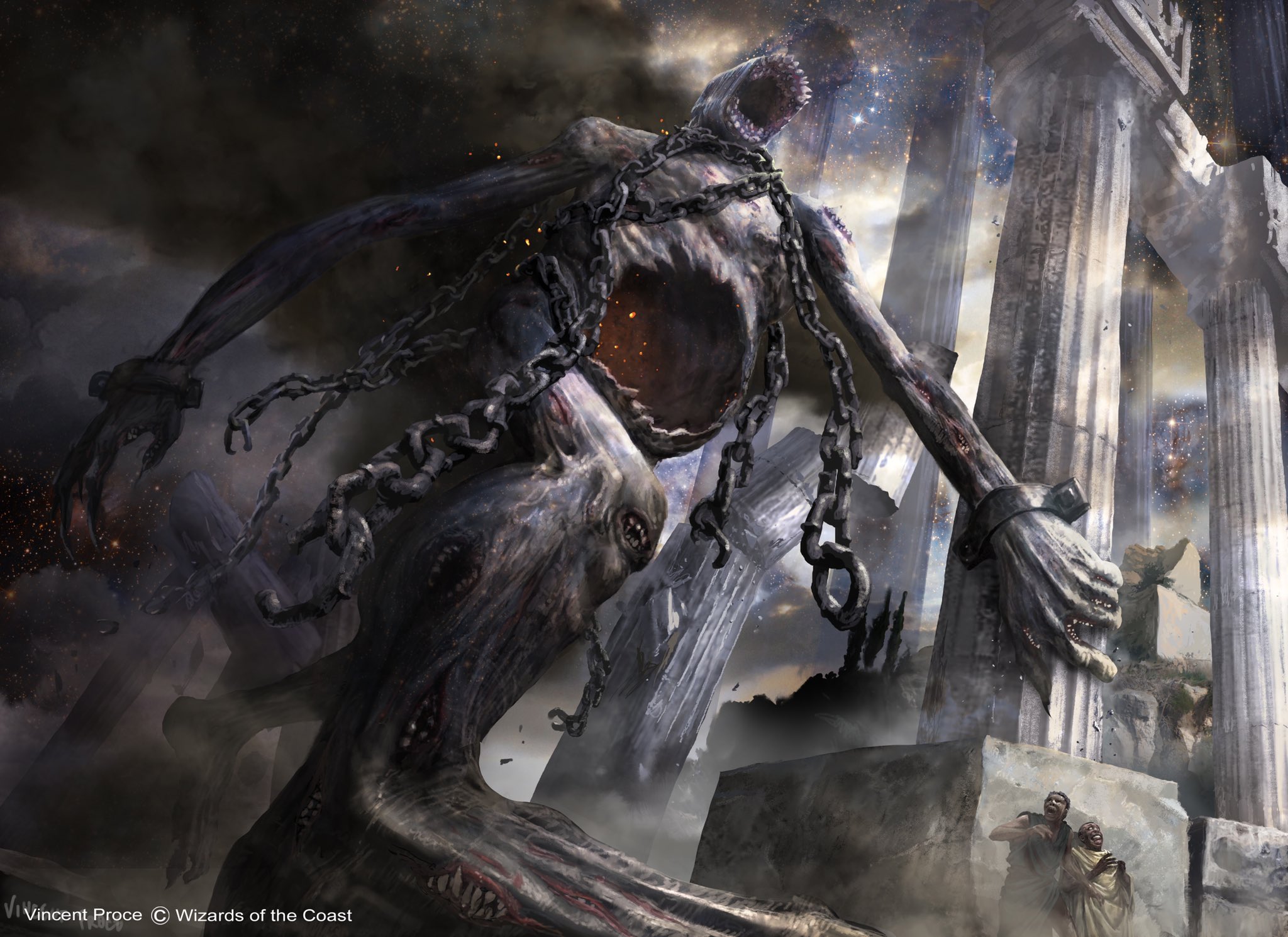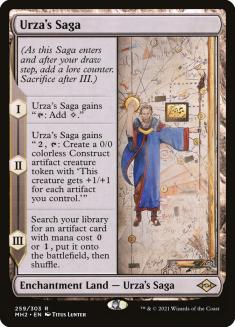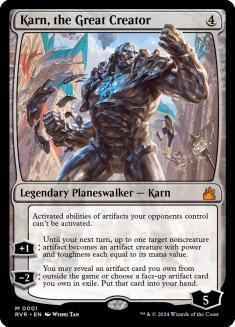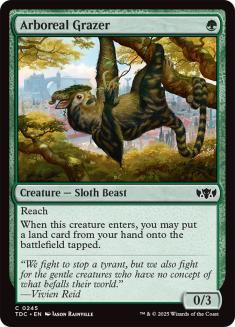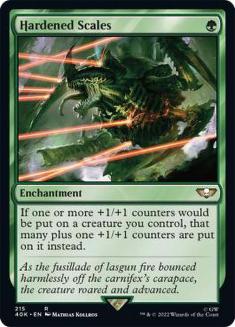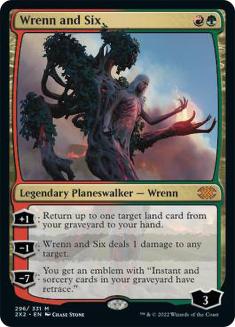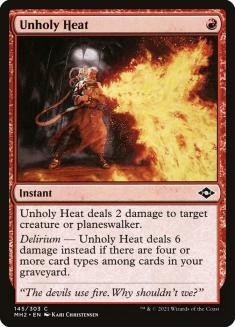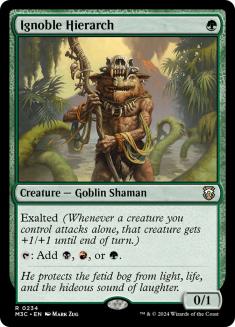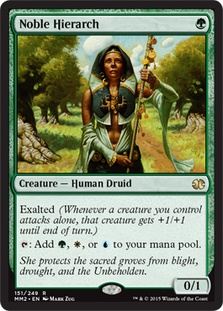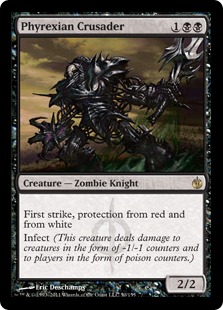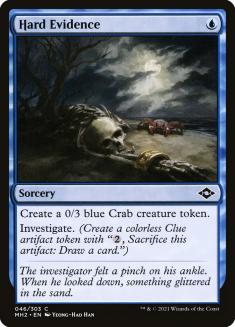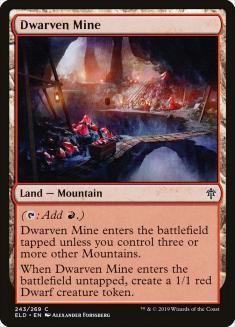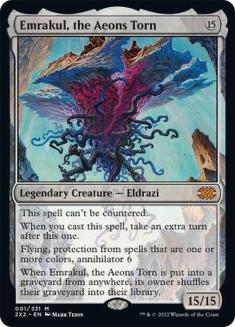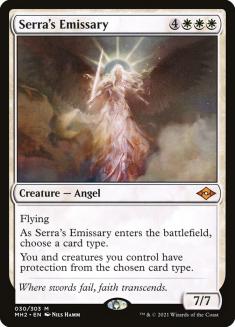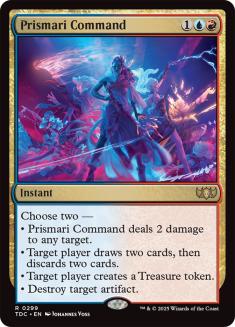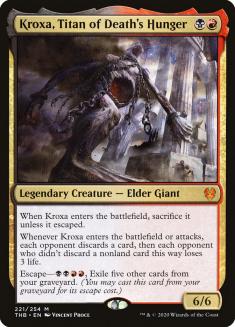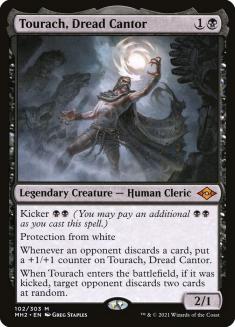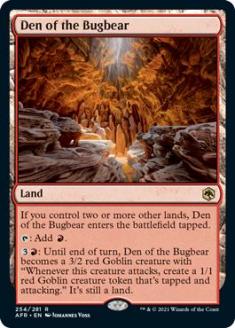Modern is currently experiencing a renaissance. A diversity among viable archetypes means many decks are seeing play, and winning! With the release of Modern Horizons 2, I was under the impression that the format would boil down to Urza’s Saga and Ragavan, Nimble Pilferer decks, but that’s just not the case.
While many top archetypes share a few cards or packages, the overwhelming majority of decks feel like their own thing. The games are fun, complicated, and full of swings. The decks themselves are difficult to pilot and reward you for format knowledge. All in all, this might be one of the healthiest Modern metagames of all time.
One reason for this is a power increase among interactive spells. Counterspell, Unholy Heat, and Prismatic Ending have changed the game. All three of these cards lend a hand for “fair” decks to answer problems more broadly.
Unholy Heat has singlehandedly given red decks a Fatal Push-style card, which is better than Lightning Bolt in a deck that is trying to maintain battlefield control. This boost in interaction has pushed the format more toward midrange, and a decent amount of midrange is important for a healthy format.
Interaction tends to slow the game down. When that happens, midrange and control start to see a boost in popularity. The slower or bigger versions of these archetypes tend to dominate because they do the best job at overwhelming the opponent when given enough time. The more powerful midrange cards generate a ton of mana or card advantage (or both), but different types of cards are better against different types of opponents.
The results from CFB Las Vegas are in, and with those results come a treasure trove of decklists. The Top 8 of the Modern main event featured one of the coolest Top 8s in a long time, so today’s article will go through and rate them all on their strengths, weaknesses, and x-factors. Let’s dig in!
8th Place: Four-Color Control (Kaheera)
Creatures (10)
Planeswalkers (10)
Lands (24)
Spells (16)

Omnath, Locus of Creation was banned so quickly in three formats that I had to go get my neck checked out for whiplash. In Modern, it survives and thrives. Many builds have come out featuring the explosive Elemental, but the most recent and popular was inspired by Gabriel Nassif. My gut tells me that this archetype has some serious flaws, but it is inherently powerful and offers flexibility in deckbuilding and playstyle.
This is the “biggest” of the midrange decks, offering you a top-end that is hard to beat by traditional means. When I talk about “going over the top” of your opponent, something like Omnath is exactly what I’m talking about. Big mana generation is high on the list for beating other midrange decks. One of the choke points for a deck like this is lack of mana generation, so anything that replaces itself while giving you a big resource boost is key, and likely the biggest contributor to this deck’s success.
Counterspell in a tapout midrange deck is where I draw the line. I understand it’s powerful, but my experience is this:
- Counterspell rots in your hand in the early turns because your entire deck operates at sorcery speed.
- Linear strategies that aren’t vulnerable to Prismatic Ending are tough to beat.
- Jace, the Mind Sculptor did not impress.
After this past weekend’s results, I fully expect Primeval Titan (and possibly Mono-Green Tron) to come back in a big way. They operate on a wavelength we can’t fight. We can’t win quickly enough, our disruption doesn’t do enough, and our “go big” plan gets outpaced with ease. Due to these factors, I can’t in good conscience recommend this build. Of all the decks in the Top 8, this was my least favorite, and will receive my lowest grade as a result.
Grade: C-
6th-7th Place: Amulet Titan
Creatures (15)
Planeswalkers (4)
Lands (32)
Spells (9)

Creatures (13)
Planeswalkers (4)
Lands (32)
- 4 Forest
- 1 Wooded Foothills
- 1 Boros Garrison
- 1 Golgari Rot Farm
- 2 Selesnya Sanctuary
- 1 Sunhome, Fortress of the Legion
- 1 Gruul Turf
- 1 Breeding Pool
- 4 Simic Growth Chamber
- 1 Vesuva
- 2 Tolaria West
- 2 Valakut, the Molten Pinnacle
- 1 Slayers' Stronghold
- 2 Cavern of Souls
- 1 Radiant Fountain
- 1 Crumbling Vestige
- 2 Castle Garenbrig
- 4 Urza's Saga
Spells (11)

Primeval Titan has long been one of the most powerful creatures in Modern. At six mana, I don’t think any other creature does as much as Primeval Titan does. Every time they print a new, powerful land, you have to evaluate it under the lens of Primeval Titan being able to search it up. The newest land on that list is Urza’s Saga, offering this land-based strategy an alternate win condition and more virtual copies of Amulet of Vigor.
I wanted to take a moment to talk about the impact of Urza’s Saga in Primeval Titan decks. Since it’s a land that disappears after a few turns, it doesn’t lend itself to casting six-mana spells too easily. However, in Amulet Titan, it finding Amulet of Vigor means you have four more virtual copies of your combo card, so losing a land doesn’t actually hurt too much. On top of that, Primeval Titan can search up a few when you don’t have Amulet of Vigor or Dryad of the Ilysian Grove, giving you a win condition that helps grind through traditional spot removal.
In the past few months, the rise in popularity of Unholy Heat has kept Primeval Titan in check, but the rise in popularity of various Omnath strategies has opened up the door for it to waltz back into the format. While both copies of Amulet Titan failed to make it out of the quarterfinals, it’s important to note that they were both defeated by Unholy Heat decks. I’m confident that they farmed midrange strategies all weekend, resulting in two copies reaching the elimination rounds.
All these builds are now using Karn, the Great Creator as a tutor package. I was doing this in Pioneer to great results, fueled by Nykthos, Shrine to Nyx. The fact that it can be used in a “normal game,” yet also super-powered in a “fast mana” game, is the key to its success. Having a win condition that doubles as a value engine is powerful, but it ends up being ludicrous when you can actually protect it.
The reintroduction of Arboreal Grazer into these strategies is how they’ve been fighting Ragavan, Nimble Pilferer. That card can run away with the game on the back of disruption, so having a fluid answer that works with the rest of your gameplan is pretty sick. While Arboreal Grazer is often a brick in the later turns of the game, it shines in a format full of cheap creatures.
In conclusion, these new builds of Amulet Titan are fierce. They’ve been pushing the boundaries of what Urza’s Saga can do, acting as both a combo piece and standalone win condition. The fact that it was the only archetype to put two pilots into the Top 8 does not surprise me in the least, and I think it will be a major factor in Modern for the next few months. If you’re looking for a linear deck to pick up and learn inside and out, I would highly recommend this archetype. Its only real weakness is the fact that red got an answer to Primeval Titan for one mana, but these newer builds are resilient.
Grade: A+
5th Place: Hardened Scales (Lurrus)
Creatures (21)
- 4 Arcbound Ravager
- 2 Arcbound Worker
- 4 Hangarback Walker
- 4 Walking Ballista
- 4 Zabaz, the Glimmerwasp
- 3 Ingenious Smith
Lands (25)
Spells (14)

Hardened Scales lost a lot of its luster when Mox Opal was banned, but Hardened Scales was always one of the worst Mox Opal decks. Losing it was bad, but not nearly as disastrous as something like Urza, Lord High Artificer losing access to its mana accelerator.
As with all the artifact decks in Modern, Urza’s Saga is making another appearance, but in this build it is primarily used to find aggressive elements or The Ozolith. Walking Ballista and all the other counter-generating cards work flawlessly with Hardened Scales to generate big threats in a hurry.
The combo potential of Walking Ballista with Arcbound Ravager means you can kill people out of nowhere, but the downside is that all your threats are vulnerable to Ancient Grudge and the like. Urza’s Saga is pulling plenty weight here, even going so far as making massive Constructs while finding the deck’s primary synergy pieces.
Lurrus of the Dream-Den is relatively new for Hardened Scales, but having that payoff in the later turns means running out of steam is unlikely. The white splash is a little painful on occasion, but the addition of Ingenious Smith as a card generator and big threat is absolutely demented. White also gives you some sweet sideboard options too, which is all the more reason to splash for one of Magic’s greatest payoffs.
While this deck hasn’t seen the spotlight in a while, I think it does a lot of things very well. This build looks promising, and I think you’ll be pleasantly surprised at all the small things you can learn just from playing the deck for a few Leagues. Many lines can result in a combo kill, and many of them are somewhat convoluted. I still don’t know how to use The Ozolith in tabletop. I usually just let Magic Online (MTGO) tell me how many counters it is getting and giving. After all, I only have ten fingers!
Final Grade: B
4th Place: Jund Midrange (Lurrus)
Creatures (12)
Planeswalkers (4)
Lands (23)
Spells (21)

I’ve written about this deck in the past, and loved it. Affectionately nicknamed Zoomer Jund because it incorporates a lot of the more powerful cards printed in the last few years, this build revolves around cheap threats and cheaper disruption. It also pairs Urza’s Saga with Wrenn and Six to great effect, allowing you to rebuy and keep generating advantages from the format’s most powerful land.
The downside is that Urza’s Saga taps for colorless mana and Wrenn and Six requires both green and red mana in the first few turns. The black disruption of Inquisition of Kozilek and Thoughtseize asks you for early black mana, which can stretch the deck pretty thin on occasion. In this build, you have to think of Urza’s Saga as a spell more than a land, as the colorless mana doesn’t cast much.
Brad Nelson piloted this archetype to a Top 8 at the SCG Invitational earlier this year, making this a 2/2 for Top 8 in live events. Discard is a potent form of disruption in Modern, and coupling it with the cheap red threats from Modern Horizons 2 is a no-brainer. Both Ragavan, Nimble Pilferer and Dragon’s Rage Channeler are excellent creatures to ride a disruption wave. Ragavan builds mana and the occasional card, while Dragon’s Rage Channeler smooths your draws and hits hard and evasively. It is extremely easy to turn on delirium in this deck thanks to Mishra’s Bauble and Urza’s Saga, making Dragon’s Rage Channeler one of the best “Jund” threats you could ever ask for.
Speaking of delirium, Unholy Heat is one of the best removal spells Modern has to offer. It has fully replaced Lightning Bolt in this build, acting as a virtual Swords to Plowshares. It kills Primeval Titan for one mana, which is about the best you can ask for. Path to Exile has virtually ceased to exist due to the ease in which you turn on delirium and giving your opponent a land is horrific.
The Unholy Trinity of Ragavan, Dragon’s Rage Channeler, and Unholy Heat has reshaped how we think about and build red decks in Modern. Pairing these with either Counterspell or Thoughtseize is a recipe for success, but discard spells are much stronger with Urza’s Saga because they are generally cheaper. Urza’s Saga is fairly mana-intensive, as you gain the most value out of creating two Construct tokens from it. Having the surrounding cast be as cheap as possible is important for making it the best it can be.
I absolutely adore this deck. It plays the long game well thanks to Wrenn and Six, and has the tools to close games quickly against linear opponents. I’m ecstatic that both Unholy Heat players defeated both Primeval Titan players, meaning that Unholy Heat decks are still among the better options for taking them down. If Primeval Titan decks come back with a flourish, I fully expect an end to this Omnath nonsense and a homogenization of midrange back to Lurrus and decks like this.
Grade: A-
3rd Place: Sultai Infect
Creatures (20)
Lands (20)
Spells (20)

Noble Hierarch was always one of the better cards in Infect. A mana producer that buffs your payoff creatures is huge. Hitting those crucial three- and four-mana break points allows you to cast a threat and protect it in one turn cycle. Now having eight creatures that can do virtually the same thing is huge, even if both only produce two of the three colors that your deck requires.
In the old days of Simic Infect, there were a few people testing out Golgari versions because of the raw strength of Phyrexian Crusader. Its natural protection from Lightning Bolt and Path to Exile made it an ideal candidate for pumping. That meant you didn’t necessarily need Vines of Vastwood or Blossoming Defense to keep it alive.
Noble Hierarch can be awkward on occasion, as it doesn’t produce black for Phyrexian Crusader. Be conscious of this when fetching early, as Forest into Noble Hierarch can’t cast Phyrexian Crusader on the second turn.
Phyrexian Crusader is the primary reason to play black. I don’t like versions that play Thoughtseize or similar because most decks in Modern are built around redundancy. Your bottleneck point should be mana instead of picking specific cards out of their hand. Protection spells are much stronger in a deck like this when they play double duty as pump spells. Discard spells are built to slow the game down, and decks like Infect want to end the game as quickly as possible. There’s a reason why this build doesn’t play discard spells at all, even in the sideboard. You’re much better off going for the kill rather than trying to disrupt your opponent.
My personal experience with Infect has been mostly positive. I spent a year or so hanging out with Tom Ross tweaking and playing Infect in various formats. I loved the deck until I hated the deck, as is the trajectory when you start off winning a lot and ultimately end up losing a ton as the format adapts. Infect shines in a format that isn’t overly interactive, but this build might actually toss that theory on its head. Phyrexian Crusader gives the deck so much resilience that any opponent relying on red or white to kill your creatures might just lose on the spot once it resolves. If Primeval Titan decks come back in a big way, Infect is a great way to challenge it.
Infect will still struggle against hyper-interactive decks like Grixis Death’s Shadow (Lurrus), which is one of the primary reasons I quit playing it in the first place. While we’ve gotten some nice upgrades over the last few years, I would not recommend playing Infect in a room full of Thoughtseize and black-based removal. For now, Infect might be a great choice, but it will always suffer from being a known quantity. It has increased threat density now, but is it enough? Infect has often faltered due to needing a healthy balance of threats, protection/pump, and mana. Discard decks can break that down easily, stripping you of your only threat or only pump spell on the regular.
I’ve found that, too often, you’re not in control of the match’s outcome. Instead, you’re left at the mercy of whether or not your opponent is prepared to interact with you. In Modern, this is usually the sign of a “metagame deck,” or a deck that’s only good if the opponents aren’t aware of it or aren’t prepared for it. Given more time or context, it’s trivial to increase your win percentage against archetypes like this because the onus of interaction is set squarely on the opponent’s shoulders.
Grade: B-
2nd Place: Four-Color Indomitable Creativity
Creatures (2)
Planeswalkers (11)
Lands (24)
Spells (23)
- 2 Lightning Bolt
- 3 Remand
- 3 Fire
- 4 Indomitable Creativity
- 3 Prismari Command
- 4 Prismatic Ending
- 3 Hard Evidence
- 1 Faithful Mending
Sideboard

This deck is relatively new, but a few cards printed in the last few months have given it a significant boost. Hard Evidence gives you two permanents to target with Indomitable Creativity, and the 0/3 Crab token is quite good at blocking Ragavan. Even if they kill your Crab token, you still have a Clue token hanging out, which can fuel your combo or draw a card when low on resources.
This whole deck is built much in the same way as Splinter Twin, with cards dedicated to playing a control game while a tight little combo package carries in the later turns. One-card combo decks are surreal to me, because all they require is a little sacrifice in deckbuilding to get online. The requirement in this build is that most of your lands be Mountains, which we already know is relatively easy thanks to our history playing Valakut, the Molten Pinnacle.
Dwarven Mine gives life to Indomitable Creativity, acting as a fetchable land that can fuel your combo all by itself. The other cards in your deck that create excess token permanents are useful but hardly necessary for getting your big dummies online. I’ve also seen quite a few games won by just attacking with those Dwarf tokens, as the deck can function like a control deck in a pinch. It has plenty of removal and some soft interaction like Remand to slow the opponent down.
One absolutely deranged part of this deck is the addition of the fourth color. Thanks to being able to fetch Ketria Triome and Raugrin Triome, playing four colors is easier than you think, but I would not feel comfortable pitching you this deck without warning you at how awkward some of the draws can be.
Teferi, Time Raveler is one of the best cards in Modern, and it puts this deck over the top. Being able to bounce an opposing hate card or threat while replacing itself is good enough, but protecting your combo from removal or counterspells is disgusting. Whenever you see a combo deck in Modern these days, it seems to always have a secondary plan that allows Teferi, Time Raveler to lock out your opponent or interact favorably with their side of the battlefield. It’s a house against all forms of cascade, and completely invalidates specific types of reactive measures.
The original version of this deck only played Emrakul, the Aeons Torn as a win condition and I was perplexed by it. While it would win most games, a combo that requires so many deckbuilding concessions should not be so easy to disrupt. A single Teferi, Time Raveler, for example, could undo all your hard work. Adding in a Serra’s Emissary helps do a few things you couldn’t do before:
- Protect your Emrakul from targeted interaction
- Protect you from creature or targeted assaults on your life total
These two angles of attack were the easiest ways to beat you even after a resolved Indomitable Creativity. With a single Serra’s Emissary, we’re able to cast Indomitable Creativity for X=2 and bury most opponents. Serra’s Emissary is a monster, and combines with Emrakul for an effective one-two punch.
Prismari Command does more in this deck than you have any right asking for. Killing creatures or artifacts is pretty solid, but being able to loot Emrakul back into your deck is sick. On top of all that, creating a Treasure token gives you a target for Indomitable Creativity. I cannot sing its praises here enough.
Overall, I’d say that this deck mostly just loses to itself. Your combo is relatively difficult to disrupt, often requiring multiple removal spells at instant speed, all at the pace you dictate with your interaction. If your opponent ever taps out, you get to end the game. If they hold up removal, you get to effectively steal all that mana from them every turn, much like Splinter Twin. The only real downside is that too many of your lands will enter the battlefield tapped in the first few turns in matchups where you can’t afford it.
The draw of playing a one-card combo is enticing. Similar to Temur Crashcade, this Indomitable Creativity deck functions by finding the perfect turn to cast their marquee spell. Every other part of the deck is there to find that combo, protect yourself from interaction, and slow the game down to the point where your spell can resolve safely. Combo-control as an archetype is often the most dangerous, and its success in Las Vegas is not surprising. I don’t expect this one to blow up like combo-control in the past. It’s a powerful deck, but not always reliable.
Grade: C+
1st Place: Rakdos Midrange (Lurrus)
Creatures (16)
- 3 Kroxa, Titan of Death's Hunger
- 4 Dragon's Rage Channeler
- 3 Tourach, Dread Cantor
- 4 Ragavan, Nimble Pilferer
- 2 Dauthi Voidwalker
Lands (22)
Spells (22)

Of all the decks to win the tournament, this was probably the most predictable but also the most boring. This build was originally built by AspiringSpike but has lost a bit of its popularity over the last few weeks. As the format expands its range of potential deck choices, it becomes clear that this one is at the top of the consistency scale but rather low on raw power. It’s just a pile of good cards, which makes it relatively hard to trump with one specific card or interaction.
These midrange decks are insulated from hate cards because they don’t rely on one specific zone or combination to get the job done. It’s disruption, removal, and cheap creatures in a tight little package that utilizes the Unholy Trinity from Modern Horizons 2. Even something like Rest in Peace, a solid card for keeping your graveyard elements in check, isn’t as effective here as it could be, and that’s by design.
If the format is moving toward midrange, Kroxa, Titan of Death’s Hunger is tough to topple. It closes the game quickly while shrinking your opponent’s resources. It keeps coming back, even in the face of removal, so stopping it via traditional means is difficult. The only downside is that it’s slow, and relatively weak on the front half. Your deck is designed to slow the game down a bit, which ultimately makes Kroxa into the monster it is supposed to be.
I haven’t been impressed by Tourach, Dread Cantor yet. I’ve been watching AspiringSpike’s stream for a while and played the deck quite a bit myself, and I’ve always wanted something different in that slot. It’s just a little too slow at four mana, and not as impactful as it could be. With that said, it is a “more expensive” spell that gets around the Lurrus of the Dream-Den deckbuilding clause, so I see the appeal. I would just rather something a little more game-breaking for the mana, considering you rarely cast it for two mana. If the front half were viable, I would be more enthusiastic about this split card, but I have rarely seen it come down without the kicker being paid.
This creature-land is a significant upgrade for the deck, and does so without adding too much stress to the manabase. The downside is that tapping for red only means Dauthi Voidwalker is a bit worse, but the shrunken numbers on those and high number of Graven Cairns mean it shouldn’t be much of an issue. It’s not surprising that a midrange deck would want a creature-land like this one. Raging Ravine was often heralded as the reason for old-school Jund’s success, as the entire gameplan was to break both players down to effectively zero resources. When you do that, any land that adds utility to your gameplan is worthwhile. Creature-lands that can close the game while your opponent is empty-handed are highly valuable.
If you’re new to Modern, this is one of the better decks and is also easy to learn. If you’re looking for an entry point, Rakdos Midrange (Lurrus) is a perfect launch pad. Customize the maindeck and sideboard to your liking, and change your tools based on the shifts in the format. If you like tinkering with your deck and playing discard for interaction, just play Rakdos. It’s excellent.
Grade: A+
As we move toward a return to live tournaments, I expect Modern to pick up quite a bit in popularity. I think it’s a miracle it was able to survive eighteen months of MTGO-only tournaments, but it’s wonderful to see it thriving. My suggestion, if you haven’t already, is to pick a Modern deck and latch on. Become a master of your archetype, and learn everything there is to know about it.
If you choose one of the decks from Las Vegas, heed my words on the strengths and weaknesses of each. Know what you’re getting yourself into so you can prepare to mitigate those weaknesses and highlight the strengths. Personally, I’ll be leaning on Ragavan to carry me because I am aware of my own weaknesses! It also lends itself to the type of gameplay that I prefer: casting one or two creatures and disrupting the hell out of your opponent’s gameplan.
Thanksgiving is this week, so please travel safely, and pardon me while I go bury myself in green bean casserole and curl up in a food coma on the couch. See y’all next week!

